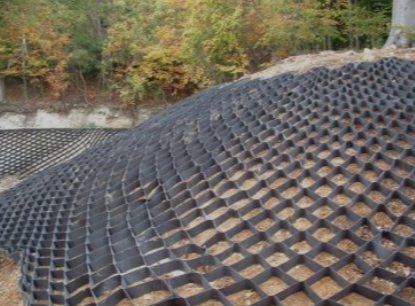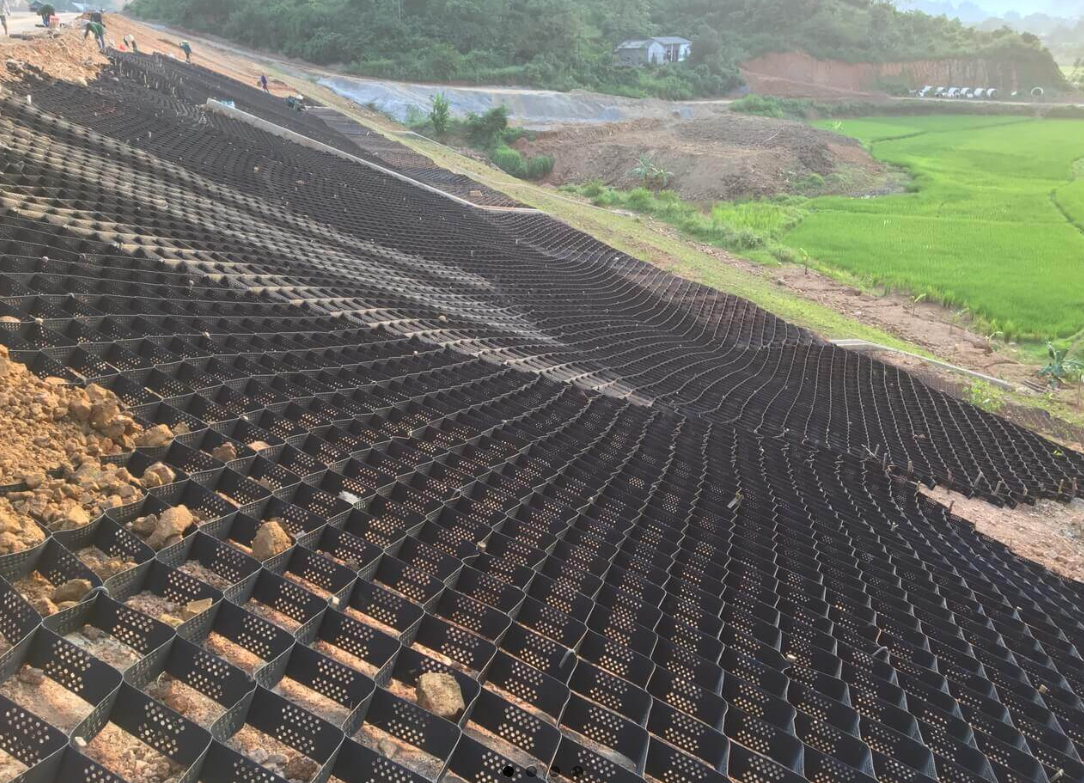- Understanding the Role of Geomembrane Liners in Waste Management
- Innovations in Geomembrane Liners for Water Management
- Geomembrane Liners: A Comprehensive Guide
- The Future of Geomembrane Liners in Civil Engineering
- Geomembrane Liners: Enhancing Landfill Stability
Manager:Alvin Wang
WhatsApp:+62 8983806051
Tel:+86 10-5797-1075
Email:steelwang@okorder.com
Address:3rd Floor, No.2 Building, No.1 Sanlihe Road
When should you use geogrid?
Introduction:
In the realm of civil engineering and construction, ensuring stability and durability in slope protection is paramount. The advent of geosynthetic materials has revolutionized traditional methods, offering innovative solutions for challenging terrain. Among these, geogrid stands out as a versatile option, particularly in geocell slope protection applications. Understanding when to utilize geogrid is crucial for optimizing slope stability and mitigating erosion risks.

Understanding Geogrid:
Geogrid is a geosynthetic material composed of polymers such as polyester, polyethylene, or polypropylene, formed into a grid-like structure. This design provides exceptional tensile strength and resistance to deformation, making it ideal for reinforcing soil structures. When integrated into slope protection systems, geogrid enhances stability by distributing loads and restraining soil movement.
The Role of Geocell Slope Protection:
Geocell slope protection utilizes cellular confinement systems to stabilize soil on slopes and prevent erosion. These systems consist of interconnected cells, typically made from high-density polyethylene (HDPE), filled with soil or aggregate. By confining the fill material within the cells, geocells increase frictional resistance and shear strength, effectively stabilizing the slope.
Optimizing Slope Stability with Geogrid:
One of the key applications of geogrid in slope protection is reinforcement. By incorporating geogrid layers within the fill material of geocells, engineers can significantly enhance the structural integrity of the slope. The geogrid acts as a reinforcement element, distributing tensile forces and reducing the risk of slope failure.
Enhancing Soil Retention:
Geogrid also plays a vital role in enhancing soil retention in slope protection geocell systems. As rainfall and surface runoff exert hydrostatic pressure on the slope, there is a risk of soil loss and erosion. By reinforcing the fill material within geocells with geogrid, engineers can improve soil confinement, minimizing erosion and preserving the integrity of the slope.
Mitigating Differential Settlement:
Differential settlement, caused by uneven soil compaction or subsurface conditions, poses a significant challenge in slope protection projects. Geogrid offers an effective solution by providing uniform reinforcement throughout the slope. By distributing loads evenly and reducing differential settlement, geogrid enhances the overall stability and longevity of the slope protection system.
Improving Long-Term Performance:
Incorporating geogrid into geocell slope protection designs can extend the service life of the system. The durable nature of geogrid ensures long-term performance, even in harsh environmental conditions. By minimizing deformation and resisting degradation, geogrid helps maintain the structural integrity of the slope protection system over time, reducing the need for costly repairs or replacements.
Environmental Considerations:
Beyond its engineering benefits, geogrid also offers environmental advantages in slope protection applications. By stabilizing slopes and reducing erosion, geogrid contributes to habitat preservation and minimizes sedimentation in water bodies. Additionally, the use of geogrid can facilitate vegetation establishment, further enhancing ecological sustainability.
Cost-Effectiveness:
While geogrid may represent an initial investment in slope protection projects, its long-term benefits outweigh the upfront costs. By improving slope stability, reducing maintenance requirements, and prolonging the service life of the system, geogrid delivers significant cost savings over time. Moreover, the versatility of geogrid allows for flexible design solutions, optimizing construction efficiency and minimizing material usage.

Conclusion:
Geogrid serves as a valuable asset in geocell slope protection projects, offering enhanced stability, durability, and environmental sustainability. By reinforcing soil structures, mitigating erosion risks, and improving long-term performance, geogrid plays a pivotal role in optimizing slope protection systems. Engineers and designers should consider the unique advantages of geogrid when addressing slope stability challenges, ensuring resilient and cost-effective solutions for diverse terrain."
- Previous:How to check geocell balance?
- Next:What is geocell reinforcement?






